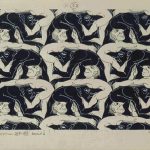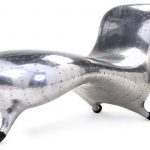[Part 9 of 12: 1) The science of the artificial 2) function, behaviour structure 3) form follows function, 4) no function in structure, 5) the medium is the message 6) types and schemas 7) aesthetics: attractive things work better 8) managing (great) expectations 9) colour 10) styles and standards 11) design solution spaces 12) conclusions]
When I am an old woman I shall wear purple
With a red hat which doesn’t go, and doesn’t suit me….Warning, Jenny Joseph
Warning was written in 1961, just before the swinging sixties and just after post-war austerity, so the idea of wearing red and purple would have seemed quite outlandish. Today, manufacturing methods have changed making colour more available in clothes and furnishings, which has changed our reactions to colour. Only in ritualistic and liturgical contexts does colour remain consistently symbolic and based in tradition, but it only has meaning for those who know. For example, the Church of England covers its crosses and other elaborate relics in purple drapes during lent, and the Vicar wears purple too, until Good Friday when she or he wears red.
Symbolism aside
Artists have long used colour symbolism in commissioned paintings, so in olden days, purple was very expensive so artists would have used it to signify wealth or royalty. In their own work, however, they used whatever they could get their hands or whatever they were fascinated by, which is why we have Picasso’s blue phase, and Van Gogh’s brown period, phases have been mythologised and discussed at length in art theory.
Modern colour theory stems from the 1830’s Sir Charles Lemieiux, who developed a practical guide to colour mixing and colour combinations in painting. This was different to Isaac Newton’s Optiks in 1704 in which Newton demonstrated the colours of the spectrum in a wheel by refracting light through a prism and created the colour wheel.
Adding and subtracting colour
The traditional way of working with colour is the subtractive colour space of pigment-based colour, like Lemieiux was concerned with, in the mixing of paint. The absence of any pigment produces white, and all pigments blended together produces black. So, the primary colours are the ones we learnt at school: red, yellow, blue with the secondary colours are orange, green, violet.
The electronic way of working with colour is the additive colour space which is light-based. On a computer, light is added to the screen in differing amounts to produce colour. The absence of any light is black, and all the colours blended together produces white. Here the primary colours are red, green, blue, and the secondary colours are yellow, magenta, cyan.
We saturate a colour by reducing the amount of grey in it, or make it brighter by adding white.
Intention
Colour theory is one thing, but there is no theory about how to use colour to influence branding and marketing. Research has many and contradictory ideas from the we prefer what is familiar and recognisable to us, like Heinz Ketchup is always red, to the we prefer variety and like a gimmick, like Heinz Ketchup when it came in the colours purple and green.
Researchers can only agree that colours are seen interpreted differently by age group, like Jenny Joseph back in 1961, gender, and nationality regardless of whether that colour is on a product, a logo, or any other visual.
So, the only thing to ever do when it comes to colour is for a designer to ask the target user group what they think and if the colour is doing what it was intended to do.







4 comments